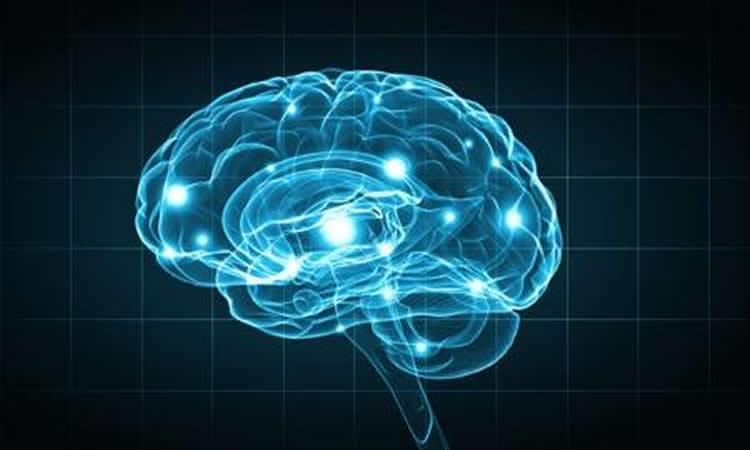Summary: Researchers provide new insights into the role of UBQLN2 in removing toxic protein clumps.
Source: University of Glasgow.
New research has identified how cells protect themselves against ‘protein clumps’ known to be the cause of neurodegenerative diseases including Alzheimer’s, Parkinson’s and Huntington’s disease.
The study was done using a custom-built laboratory device that can compress neurons inside 3-D cell cultures while using a powerful microscope to continuously monitor changes in cell structure.
The study, which is published today in Cell and was conducted by the University of Glasgow in collaboration with the MRC Protein Phosphorylation and Ubiquitylation Unit at the University of Dundee, offers an insight into the role of a gene called UBQLN2 and how it helps to remove toxic protein clumps from the body and protect it from disease.
Using biochemistry, cell biology and sophisticated mouse models, the researchers discovered that the main function of UBQLN2 is to help the cell to remove dangerous protein clumps – a role which it performs by first detangling clumps, then shredding them to prevent future tangles.
Protein clumps occur as part of the natural aging process, but are normally detangled and disposed of as a result of the gene UBQLN2. However when this gene mutates, or becomes faulty, it can no longer help the cell to remove these toxic protein clumps, which leads to neurodegenerative disease.
Dr Thimo Kurz, from the Institute of Molecular, Cell and Systems Biology, said: “The function of UBQNL2 is connected to many neurodegenerative disorders, such as Parkinson’s, Alzheimer’s and Huntington’s disease.
“These patients often have very clear clumps in their brain cells. Using mice that mimic human Huntington’s disease, we found that when UBQLN2 is mutated, it could no longer help nerve cells to remove protein clumps in the brains of these mice.”

Previous work has shown that when the UBQLN2 gene is faulty, it leads to a neurodegenerative disease called Amyotrophic Lateral Sclerosis with Frontotemporal Dementia (ALS/FTD or motor-neuron disease with dementia). However until this study it was not fully understood why mutation of this gene caused disease.
Now that scientists understand exactly how UBQLN2 works and what it does, they are also able to understand why its mutation appears to be so detrimental to the body.
Indeed they hope that their findings will pave the way for new research into novel treatment options for patients with neurodegenerative diseases.
Dr Roland Hjerpe said: “The significance of this discovery goes beyond the role of UBQLN2 in motor-neuron disease with dementia.
“Our study has revealed a new mechanism by which nerve cells cope with protein clumps in general, which has implications for most neurodegenerative diseases and can open up avenues for new therapeutic interventions to treat these conditions in the future.”
Funding: The research was funded by the Medical Research Council (MRC), an ERC Starting Investigator Grant, a Tenovus Scotland grant, the CDHI foundation as well as the pharmaceutical companies supporting the Division of Signal Transduction Therapy Unit (AstraZeneca, Boehringer-Ingelheim, GlaxoSmithKline, Merck, Janssen Pharmaceutica and Pfizer), at the University of Dundee.
Source: Ali Howard – University of Glasgow
Image Source: This NeuroscienceNews.com image is adapted from the University of Glasgow press.
Original Research: Full open access research for “UBQLN2 connects the proteasome with the HSP70 system to promote autophagy-independent protein aggregate clearance” by Roland Hjerpe, John S. Bett, Matthew J. Keuss, Alexandra Solovyova, Thomas G. McWilliams, Clare Johnson, Indrajit Sahu, Joby Varghese, Nicola Wood, Melanie Wightman, Georgina Osborne, Gillian P. Bates, Michael H. Glickman, Matthias Trost, Axel Knebel, Francesco Marchesi, Thimo Kurz in Cell. Published online July 28 2016 doi:10.1016/j.cell.2016.07.001
[cbtabs][cbtab title=”MLA”]University of Glasgow. “How a Single Gene May Protect Against Causes of Neurodegenerative Diseases.” NeuroscienceNews. NeuroscienceNews, 2 August 2016.
<https://neurosciencenews.com/genetics-neurodegenerative-diseases-4768/>.[/cbtab][cbtab title=”APA”]University of Glasgow. (2016, August 2). How a Single Gene May Protect Against Causes of Neurodegenerative Diseases. NeuroscienceNew. Retrieved August 2, 2016 from https://neurosciencenews.com/genetics-neurodegenerative-diseases-4768/[/cbtab][cbtab title=”Chicago”]University of Glasgow. “How a Single Gene May Protect Against Causes of Neurodegenerative Diseases.” https://neurosciencenews.com/genetics-neurodegenerative-diseases-4768/ (accessed August 2, 2016).[/cbtab][/cbtabs]
Abstract
UBQLN2 connects the proteasome with the HSP70 system to promote autophagy-independent protein aggregate clearance
Highlights
•UBQLN2 clears aggregates independent of autophagy via HSP70 and the proteasome
•A disease mutation in UBQLN2 prevents its binding to HSP70
•Mutant UBQLN2 is defective in clearance of aggregates in vivo
•UBQLN2 knockin mice develop cognitive impairment and brain pathology
Summary
Clearance of misfolded and aggregated proteins is central to cell survival. Here, we describe a new pathway for maintaining protein homeostasis mediated by the proteasome shuttle factor UBQLN2. The 26S proteasome degrades polyubiquitylated substrates by recognizing them through stoichiometrically bound ubiquitin receptors, but substrates are also delivered by reversibly bound shuttles. We aimed to determine why these parallel delivery mechanisms exist and found that UBQLN2 acts with the HSP70-HSP110 disaggregase machinery to clear protein aggregates via the 26S proteasome. UBQLN2 recognizes client-bound HSP70 and links it to the proteasome to allow for the degradation of aggregated and misfolded proteins. We further show that this process is active in the cell nucleus, where another system for aggregate clearance, autophagy, does not act. Finally, we found that mutations in UBQLN2, which lead to neurodegeneration in humans, are defective in chaperone binding, impair aggregate clearance, and cause cognitive deficits in mice.
“UBQLN2 connects the proteasome with the HSP70 system to promote autophagy-independent protein aggregate clearance” by Roland Hjerpe, John S. Bett, Matthew J. Keuss, Alexandra Solovyova, Thomas G. McWilliams, Clare Johnson, Indrajit Sahu, Joby Varghese, Nicola Wood, Melanie Wightman, Georgina Osborne, Gillian P. Bates, Michael H. Glickman, Matthias Trost, Axel Knebel, Francesco Marchesi, Thimo Kurz in Cell. Published online July 28 2016 doi:10.1016/j.cell.2016.07.001







